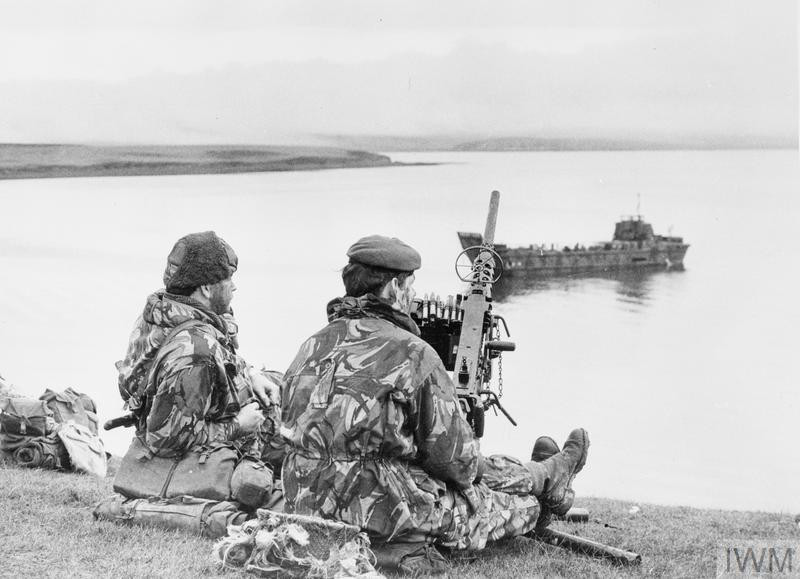British troops began to fan out in earnest from the western edges of East Falkland on Monday 31 May 1982 as the noose around Argentine forces in the Stanley area started to draw a little tighter.
3 Commando Brigade would take the northern route across the island, and the Mountain and Arctic Warfare Cadre (M&AW) set the tone when they were flown in by helicopter to attack an Argentine Special Forces patrol at Top Malo House, south of Teal Inlet.
Five of the 17-man Argentine group were killed and the remainder captured, with four Royals being hurt in the skirmish.
Simultaneously, K Coy 42 Cdo RM reached the 333m summit of Mount Kent, less than 15 miles from the islands’ capital; the Royal Marines then dug in for the next few days in conditions that were turning distinctly challenging as the Austral autumn turned to winter.
Later on 31 May L Coy 42 Cdo flew east from Port San Carlos by helicopter and proceeded to march towards the 192m-high Mount Challenger, a few miles south of Mount Kent.
3 Cdo Bde’s headquarters followed on from the troops, heading towards Teal Inlet, where assault ship HMS Intrepid arrived late on 31 May to deliver the first supplies needed for the new forward operating base.
That supply chain was maintained over the rest of the week by the Landing Ships Logistic (LSLs), with RFA Sir Percivale leading the way on 1 June.
While the troops were heading out, the usual business of the Royal Navy was being carried out in San Carlos Water and beyond.
Tanker RFA Tidepool refuelled assault ship HMS Fearless in the narrow inlet, while small Fleet tanker RFA Blue Rover also joined the flotilla off the beachhead.
And throughout this period frigates and destroyers pounded targets onshore, backed by Harrier bombing missions, and hospital ship HMHS Uganda sailed in to Falkland Sound from the ‘Red Cross box’ to pick up casualties.
The firsts waves of supplies for the 5th Infantry Brigade were also being ferried in to San Carlos Water in advance of the arrival of the troops themselves in the coming days.
The RAF’s Operation Black Buck was dusted off again on 31 May – the fifth in the series; this time a Vulcan armed with American Shrike anti-radiation missiles set off from Ascension to destroy an Argentine long-range radar system at Stanley.
A Sea Harrier raid was organised to coincide with the strike to force its operators to switch it on – the radar had to be operating to allow the Shrike missiles to home in on it – but one of the missiles caused only minor damage and the other missed completely.
Today’s image from the Imperial War Museum collection (© IWM FKD 409) shows two Royal Marines of 40 Cdo defending the landing site at San Carlos, with a landing craft from HMS Intrepid in the background.
* These posts can only give a brief sense of what was a complex and fast-moving situation 40 years ago, and cannot cover the involvement of every ship, squadron and unit in detail – for a much more comprehensive account see the Falklands section of naval-history.net at https://www.naval-history.net/NAVAL1982FALKLANDS.htm
The Royal Naval Association is the biggest collective group of Royal Naval veterans and serving personnel, with more than 270 branches in the UK and overseas.
The RNA provides those with a link to the Royal Navy access to a life-long community of like-minded and supportive individuals.
Our community provides companionship, resilience, comradeship and unity to anyone and everyone with a Naval story, supporting them through life's highs and lows.
Membership is now free (please note, some branches may charge a small annual subscription, payable locally on their request) – see https://royal-naval-association.co.uk/join-us/ for details of how to join.
